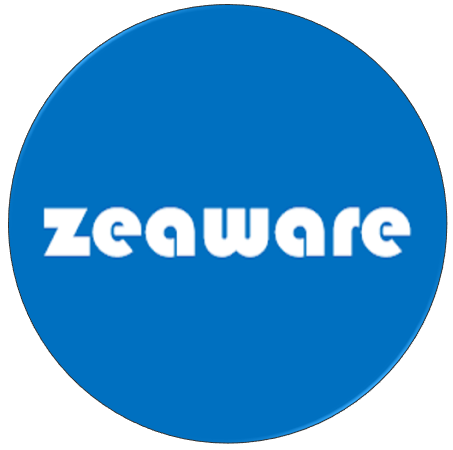Clarifying the Data Quality focus for LLM's
In the world of generative AI and LLM’s, there's a lot of talk about the importance of good data quality, but it often sounds vague and not very specific, especially for organisations that don't build their own Large Language Models (LLMs) from scratch.
There is a plethora of blog posts and whitepapers tout the critical nature of high-quality data for the development of LLMs, yet, for many, this dialogue feels distant, perhaps even irrelevant. After all, the lion's share of organizations will engage with LLMs through pre-trained models rather than embarking on the herculean task of training these models from scratch. So, does data quality truly matter for the majority? The short answer: yes, but the heart of the matter lies in the specifics—particularly within the realm of Retrieval-Augmented Generation (RAG).
The LLM Landscape: A Quick Overview
At their core, LLMs are trained on vast datasets, ingesting everything from literary works to online forums to encode a wide-ranging understanding of human language. This process demands data of the highest quality: diverse, comprehensive, and meticulously cleansed of inaccuracies and biases. However, this colossal undertaking is typically the purview of tech behemoths and dedicated research institutions, not your average enterprise or startup. So, what does data quality refer to if we are not improving data quality for training an LLM?
Decoding the Misconception
The leap from acknowledging the importance of data quality in training LLMs to recognizing its significance for everyday use and interaction with these models is not as vast as it might seem. Most interactions with LLMs that include enterprise data (data not within the trained model) are through APIs and leverage pre-trained models. Herein lies the pivot to our focal point: Retrieval-Augmented Generation (RAG).
Retrieval-Augmented Generation: Why Data Quality is Non-Negotiable
RAG is a fusion of generative AI and information retrieval technologies. By amalgamating the generative prowess of LLMs with dynamic data retrieval from existing datasets, RAG systems can generate responses that are not only contextually aware but also deeply informed by up-to-the-minute data.
The Data Quality Imperative
The utility of a RAG system is directly tied to the relevance and correctness of the information it retrieves. Poor data quality means irrelevant data is supplied to the LLM as part of the RAG process. This can lead to outputs that are at best, misleading, and at worst, entirely false. This underscores the non-negotiable need for high-quality, authoritative data sources in the underlying database.
So, what does data quality in this context relate to?
Accuracy of Information
The concept of data quality in the context of Retrieval-Augmented Generation (RAG) systems and Large Language Models (LLMs) necessitates a departure from traditional data quality metrics such as consistency, master data management, and syntactical correctness. LLMs are adept at processing data with syntactic inconsistencies. Thus, the focus shifts towards the truthfulness and reliability of the data's content, particularly when the output has a significant impact on decisions or actions.
Example: Tech Support Customer Service Bot
Consider the scenario of developing a tech support bot designed to leverage historical case resolutions to address common customer issues. The integrity of the solution hinges not just on the factual accuracy of the recorded steps but also on the effectiveness and appropriateness of those solutions. If a prior solution exacerbated the issue or if the recorded steps are incomplete or misleading, incorporating this data into the RAG system could lead to suboptimal or even damaging advice being dispensed. To safeguard against this, implementing a robust process for vetting historical data is crucial. For instance, customer satisfaction surveys and resolution success rates serve as indicators of the quality and reliability of the solutions. These metrics can help filter out data that could mislead the RAG system, ensuring that only validated and effective solutions inform the responses generated.
Example: Health Advice Platform
Another illustrative example is a health advice platform using RAG to provide lifestyle or dietary recommendations based on scientific research or clinical data. In this context, the accuracy of information isn't just about the scientific validity of the data; it's also about its applicability to individual cases. A piece of advice based on outdated research or a study that has been superseded by later findings could lead to inappropriate recommendations. Furthermore, the inclusion of data without considering variations in individual health conditions or demographics could pose risks. To ensure data quality, such a platform might incorporate a layer of expert review to vet the inclusion of new research findings. Additionally, implementing a dynamic feedback loop where user outcomes contribute to the evaluation of the advice's effectiveness could enhance the system's reliability over time.
These examples underscore a pivotal point: data quality in the era of LLMs and RAG systems is intricately linked to the specific use case at hand. It's not merely about the data being accurate in a vacuum; it's about its appropriateness, effectiveness, and safety in the context for which the system is designed. Ensuring high data quality, therefore, involves a continuous process of evaluation, feedback, and adjustment tailored to the specific objectives and scenarios the system addresses.
Accuracy of Retrieval
The retrieval process for Retrieval-Augmented Generation (RAG) systems is a critical part of the overall process and it’s essential to delve into the nuances of how this process impacts the efficacy and reliability of the solution. The retrieval stage in a RAG system is not just a precursor to the generation of responses; it fundamentally shapes the quality and applicability of the output. Let's dissect the components of this process to better understand how to enhance its accuracy.
The Importance of Precision in Retrieval
The retrieval phase in RAG systems is paramount, as it dictates the dataset from which the LLM will generate its response. This step involves a nuanced search process designed to identify the most relevant content based on a given prompt. The precision of this retrieval process is critical because if the search mechanism falters in pinpointing the exact relevance of content, the subsequent generative step is compromised, potentially leading to inaccurate or irrelevant responses.
The Pitfalls of Settling for "Good-Enough"
A common oversight in designing RAG systems is underestimating the importance of the retrieval process, settling for a "good-enough" default vector search mechanism. This approach might seem adequate at a glance, but it fails to consider the complex nature of language, the subtleties of user queries, and the diverse formats of potential source data. A default system may not efficiently handle nuances, leading to a misinterpretation of user intent or overlooking critical pieces of information.
The Art of Data Chunking
How data is segmented and prepared for indexing (data chunking) is a foundational step that significantly influences the retrieval accuracy. The granularity of chunking—whether data is broken down into paragraphs, sentences, or larger sections—needs to be carefully balanced. Too granular, and the context may be lost; too broad, and the system might miss the nuances necessary for accurate retrieval. Effective data chunking considers the contextuality of the information, ensuring that each chunk is self-contained enough to offer value while being sufficiently comprehensive to maintain contextual relevance.
Indexing Strategies
The choice of indexing method plays a pivotal role in the success of the retrieval process. Traditional keyword-based indexing might be insufficient for understanding the complexities and the semantic layers of natural language. Advanced techniques like semantic indexing, which understand the context and the meaning behind words, can significantly enhance retrieval accuracy. Implementing machine learning models that continuously learn and adapt the indexing strategy based on user interactions and success rates can further refine the process.
Crossing Topics and Boundaries
Data often doesn't fit neatly into single-topic containers; it overlaps, interconnects, and crosses boundaries. A robust RAG system must account for this reality through its indexing and retrieval strategies, ensuring that information relevant to cross-disciplinary queries or those requiring nuanced understanding is accurately retrieved. This involves sophisticated tagging, categorization, and the implementation of algorithms capable of understanding the interconnectedness of data points.
Continuous Optimization and Feedback Loops
The retrieval process should not be static; it needs to evolve based on continuous feedback and performance monitoring. Implementing feedback loops where the outcomes of the retrieval process are analysed for accuracy and relevance can provide valuable insights. These insights, in turn, can drive adjustments and optimizations in data chunking, indexing strategies, and the overall approach to retrieval, ensuring that the system remains dynamic and improves over time.
Summary
The dialogue surrounding data quality in generative AI and LLM applications, particularly RAG systems, requires a nuanced understanding that goes beyond traditional data quality metrics. The accuracy of information and retrieval processes is paramount, directly impacting the system's effectiveness and reliability. Tailoring data quality measures to the specific use case, continuously optimizing retrieval processes, and implementing robust feedback mechanisms are crucial steps in ensuring the success of RAG systems.
As we navigate the complexities of integrating AI into various domains, recognizing and addressing the multifaceted nature of data quality becomes indispensable for harnessing the full potential of these technologies.






